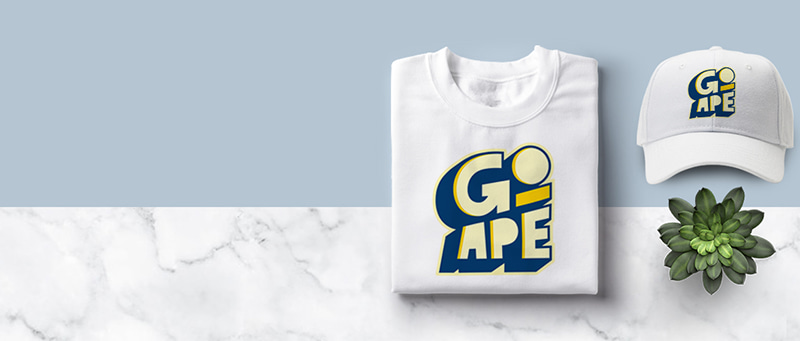The Science Behind Breathability in Branded Clothing Materials
The Science Behind Breathability in Branded Clothing Materials
Blog Article
Recognizing Garments: The Value of Fabric Options in Your Wardrobe
The choice of fabric in clothing plays a crucial function in both appearances and performance. Different products provide varying levels of resilience, breathability, and convenience, directly affecting the wearer's experience. Understanding these nuances can boost one's wardrobe substantially. Many forget exactly how these selections can impact not just personal design, however additionally sustainability. What fabric choices could redefine your wardrobe and align it with both design and duty?
The Role of Textile in Fashion and Functionality

Common Fabric Types and Their Characteristics
When picking clothing, understanding the qualities of typical fabric kinds is crucial for making educated choices. Cotton, a widely-used all-natural fiber, is understood for its gentleness, convenience, and breathability, making it ideal for laid-back wear and daily garments. Linen, one more all-natural option, boasts excellent moisture-wicking properties and a distinct texture, perfect for warm climates.Wool, often favored for its heat and resilience, differs in fineness; merino woollen is soft versus the skin, while coarser kinds are used for outerwear. Synthetic textiles like polyester and nylon provide resilience and resistance to wrinkles, making them popular for activewear and travel garments. Ultimately, blends, which combine artificial and natural fibers, can enhance capability while keeping convenience. By identifying these fabric qualities, individuals can select apparel that aligns with their lifestyle and visual choices.
Breathability and Comfort: Picking the Right Fabrics for Various Climates
Choosing the best textiles for different environments can significantly boost comfort and general wearability. Breathable products are vital in warm environments, as they enable air circulation and moisture dissipation. Fabrics such as cotton, bed linen, and moisture-wicking synthetics efficiently draw sweat far from the body, keeping the user cool and completely dry. Conversely, in chillier environments, thicker fabrics like woollen or fleece supply insulation while retaining breathability, ensuring heat without overheating.Additionally, the option of fabric weight plays an important duty; light-weight textiles are preferable for summer season, whereas heavier alternatives are suited for wintertime wear. Recognizing the unique residential properties of each textile allows individuals to dress appropriately for varying climate conditions. Ultimately, selecting breathable and comfy fabrics customized to certain environments can significantly boost day-to-day convenience and improve the total experience of wearing clothing.
Longevity and Treatment: Just How Material Influences Durability of Your Closet
Picking the ideal products can considerably influence the durability and care requirements of a wardrobe. Fabrics such as cotton and polyester are recognized for their durability and convenience of upkeep, making them excellent for daily wear. In contrast, fragile products like silk and shoelace need more careful handling and specialized cleaning techniques, which can enhance the moment and effort needed for care. Branded Clothing.Durability is additionally affected by the textile's weave and surface; firmly woven fabrics tend to stand up to deterioration better than freely woven alternatives. In addition, synthetic blends typically give improved resilience, combining the finest top qualities of multiple fibers.Understanding the treatment guidelines for each and every material is important, as inappropriate cleaning or drying can lead to premature wear. Eventually, choosing durable materials can cause a longer-lasting closet, reducing the frequency of substitutes and adding to an extra sustainable style choice
The Impact of Material on Fit and Shape

Sustainable Material Choices: Making Eco-Friendly Choices
The impact of textile extends beyond fit and shape to include ecological factors, prompting a growing interest in lasting fabric choices. Green materials, such as natural cotton, hemp, and Tencel, are gaining traction amongst consumers who focus on sustainability in their closets. These products are typically created with fewer chemicals and water, minimizing their ecological footprint.Additionally, recycled fabrics, made from post-consumer waste, provide click to investigate an innovative service to the fabric market's contamination issue. Brands increasingly embrace transparency in their sourcing methods, enabling customers to make educated choices about their purchases.Choosing lasting fabrics not only sustains ethical methods yet additionally motivates the fashion business to take on more liable manufacturing approaches. As awareness of ecological problems rises, people are advised to show on the long-lasting effect of their material selections, promoting an activity in the direction of an extra sustainable and eco mindful technique to style.
Boosting Design: Exactly How Fabric Can Transform an Outfit
While numerous may focus on shade and cut when selecting an attire, the selection of textile plays a vital role in elevating design and enhancing overall look. Different materials share distinctive state of minds and messages; for example, silk exudes high-end and elegance, while jeans provides a casual, loosened up vibe. The appearance and drape of a fabric can considerably modify the shape, with structured fabrics providing a polished look and softer ones developing a much more fluid, unwinded aesthetic.Moreover, the weight of the textile affects wearability throughout periods. Lightweight materials like bed linen and cotton are optimal for summertime, while much heavier products such as wool and velour supply warmth and sophistication in colder months. Understanding material residential or commercial properties, such as breathability and stretch, additionally encourages individuals to make informed options that boost comfort without endangering style. Ultimately, the right fabric can change an attire from regular to remarkable, making it an essential consideration in any kind of closet.
Often Asked Questions
Just how Do I Determine the Textile Material of My Apparel?
To recognize fabric content, one can examine treatment labels, conduct burn examinations for fiber recognition, or consult fabric examples. These techniques aid distinguish products, guaranteeing notified choices for clothes treatment and upkeep in daily wear.
Can Material Choice Affect My State Of Mind or Self-confidence?
Fabric choice can substantially influence a person's mood and self-confidence. Branded Clothing. Certain materials might stimulate feelings of convenience or style, while others can feel unflattering or limiting, ultimately affecting self-perception and psychological health throughout the day
What Fabrics Are Best for Sensitive Skin?
For individuals with delicate skin, all-natural materials like bed linen, cotton, and bamboo are usually recommended. These materials are breathable, hypoallergenic, and much less most likely to cause inflammation, making them appropriate choices for comfort and skin health.
Just how Do I Properly Laundry and Take Care Of Different Fabrics?
To properly wash and care for different textiles, one have to consider each material's particular demands, consisting of temperature level setups, detergents, and drying out techniques, making sure durability and keeping the material's initial qualities for perfect usage.
Exist Certain Fabrics for Athletic or Performance Wear?
Athletic or performance wear commonly utilizes materials such as polyester, nylon, and spandex. These materials are developed for moisture-wicking, breathability, and adaptability, boosting movement and comfort throughout physical tasks while supplying resilience and support. Alternatively, in cooler climates, thicker textiles like woollen or fleece give insulation while preserving breathability, guaranteeing warmth without overheating.Additionally, the selection of textile weight plays a vital duty; lightweight textiles are preferable for summertime, whereas heavier alternatives are fit for winter months wear. In contrast, fragile products like silk and lace call for even more cautious handling and specialized cleaning methods, which can boost the time and initiative needed for care.Durability is additionally affected by the material's weave and finish; tightly woven textiles often tend to stand up to wear and tear far better than freely woven options. In contrast, rigid materials can limit motion however supply a classic, sleek look.Moreover, the thickness and appearance of the textile can affect the visual understanding of body shape. The impact of material expands past fit and shape to encompass ecological aspects, triggering an expanding passion in lasting textile options. The appearance and drape of a fabric can dramatically modify the shape, with organized textiles providing a polished appearance and softer ones producing an page extra fluid, loosened up aesthetic.Moreover, the weight of this link the fabric affects wearability across seasons.
Report this page